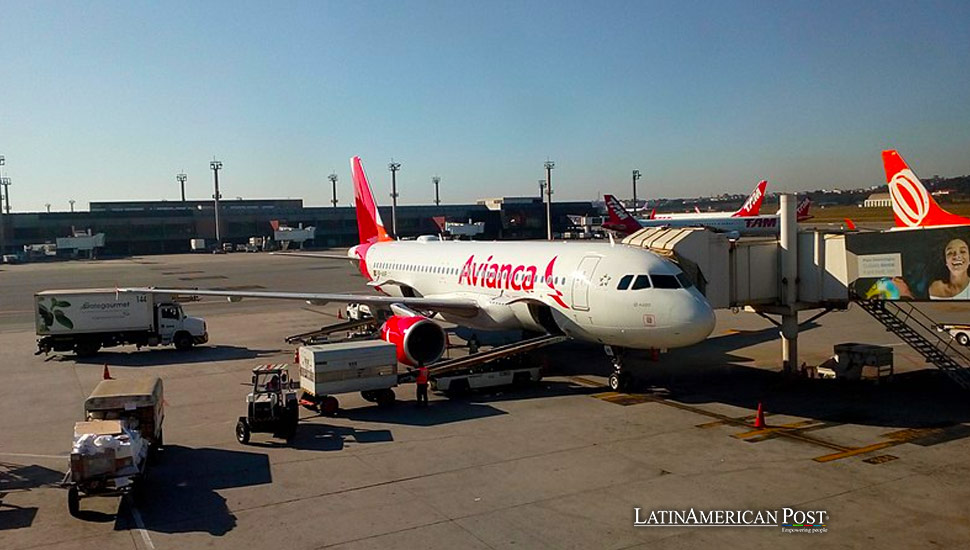Colombia’s Avianca Group Plans U.S. IPO Amid Latin American Airline Recovery

Avianca Group, the Colombian airline holding company, plans to file confidentially for an initial public offering (IPO) in the United States. This move comes more than two years after emerging from bankruptcy and amid a broader recovery in the Latin American airline industry.
Avianca Group, the holding company for the Colombian airline Avianca, announced plans to confidentially file for an initial public offering (IPO) in the United States. This strategic decision marks a significant milestone for the airline, which has existed for over 100 years since 1919. Avianca decided to pursue an IPO more than two years after the airline emerged from bankruptcy, highlighting its ongoing recovery and growth.
Avianca, one of the oldest airlines still in operation, has faced and overcome numerous challenges throughout its history. The COVID-19 pandemic, however, presented unprecedented difficulties. Like many other airlines globally, Avianca was severely impacted by the sharp decline in travel demand during the pandemic. In May 2020, the airline filed for Chapter 11 bankruptcy after failing to meet a bond payment deadline. Despite these setbacks, Avianca managed to exit bankruptcy proceedings in December 2021, a testament to its resilience and adaptability.
Despite these setbacks, Avianca managed to exit bankruptcy proceedings in December 2021. The airline’s resurgence has been marked by significant operational improvements and strategic initiatives to strengthen its market position. In May 2022, Avianca and Brazilian carrier Gol agreed to combine under a single leadership structure known as Abra Group. This partnership has provided both airlines enhanced operational synergies and a more robust competitive edge in the Latin American aviation market.
Strategic Moves and Financial Performance
Market conditions will influence the timing and execution of Avianca’s IPO, but the airline’s recent financial performance suggests a positive outlook. In the first quarter of this year, Avianca reported a profit of $13 million, a notable turnaround from previous losses. The airline transported 9.3 million passengers during this period, representing a 37.5% increase compared to last year’s quarter. Total operating revenue also saw a significant boost, reaching $1.27 billion, up from $1.09 billion in the previous year.
As of late June, Avianca’s fleet comprises 147 aircraft, including Airbus 320s and Boeing 787 Dreamliners. The airline operates 150 routes, connecting 76 destinations across 26 American and European countries. These extensive operations underscore Avianca’s critical role in the regional and international aviation markets.
Avianca is not alone in seeking the benefits of U.S. capital markets. Earlier this year, Mexico City-based Aeroméxico also filed paperwork to go public in New York, eyeing a return to stock markets. Similarly, Chile’s LATAM Airlines is working on re-listing its shares on the New York Stock Exchange. These moves highlight a broader trend among Latin American airlines aiming to leverage the deeper capital and richer valuations available in U.S. markets.
Latin American Context and Competitive Landscape
The Latin American airline industry has experienced a tumultuous few years, with the pandemic exacerbating existing financial pressures. However, the sector is now showing signs of recovery. Latin America’s major carriers, including Avianca, Aeroméxico, and LATAM Airlines, are all strengthening their financial positions and expanding their market reach.
These airlines’ decision to pursue listings on U.S. stock exchanges is indicative of their strategic efforts to access greater liquidity and attract a broader investor base. The U.S. markets offer more substantial capital resources and higher valuations than domestic markets, providing these airlines with the necessary financial muscle to support their growth initiatives.
Avianca’s move to file for an IPO in the United States is a testament to its resilience and adaptability. The airline’s ability to navigate bankruptcy proceedings, achieve profitability, and expand its operations positions it well to capitalize on the opportunities presented by the U.S. capital markets. Moreover, the partnership with Gol under the Abra Group umbrella further enhances Avianca’s competitive stance, offering synergies that can drive further growth and operational efficiencies.
Challenges and Future Prospects
While the outlook for Avianca and other Latin American airlines appears promising, several challenges remain. The aviation industry is inherently susceptible to fluctuations in fuel prices, geopolitical tensions, and changes in regulatory environments. Additionally, the lingering effects of the pandemic continue to pose uncertainties, particularly regarding travel demand and consumer behavior. Overcoming these challenges will require continued innovation, strategic planning, and adaptability from Avianca and its peers.
Avianca’s strategic initiatives, including its planned IPO, are designed to mitigate these risks and ensure long-term sustainability. The airline’s focus on enhancing its operational efficiency, expanding its route network, and leveraging the synergies from the Abra Group partnership are critical components of its growth strategy. These initiatives, along with similar efforts by other Latin American airlines, provide a strong foundation for the industry’s future.
In the broader Latin American context, the successful execution of Avianca’s IPO could set a precedent for other regional carriers. It would demonstrate the viability of accessing U.S. capital markets to support financial recovery and expansion. This could encourage more Latin American airlines to consider similar strategies, fostering more significant investment and growth in the region’s aviation sector. The IPO could also lead to increased competition and innovation, ultimately benefiting consumers and the industry as a whole.
Furthermore, strengthening Latin America’s aviation industry has significant economic implications. Enhanced connectivity can stimulate tourism, trade, and economic development, contributing to the region’s overall growth and prosperity. Latin American airlines, by tapping into the resources available in U.S. markets, can play a pivotal role in driving this economic transformation and fostering more significant investment and growth in the region’s aviation sector.
Avianca Group’s plan to confidentially file for an IPO in the United States marks a significant milestone in its journey toward recovery and growth. Emerging from bankruptcy and achieving profitability, the airline is now poised to leverage the opportunities presented by U.S. capital markets. This strategic move reflects a broader trend among Latin American airlines seeking to access deeper capital and richer valuations to support their expansion initiatives.
As Avianca navigates the complexities of the aviation industry and prepares for its IPO, other regional carriers will closely watch its success. The airline’s ability to overcome challenges and capitalize on growth opportunities is an inspiring example for Latin American aviation. By strengthening their financial positions and expanding their market reach, Latin American airlines can contribute to the region’s economic development and connectivity.
Also read: Confusion Surrounds Colombian President Petro’s Push for New Constitution
Avianca’s journey from bankruptcy to potential IPO highlights the resilience and adaptability of Latin America’s aviation industry. The airline’s strategic initiatives and partnerships position it well for future success, setting a positive example for other regional carriers. As Latin American airlines continue to recover and grow, their contributions will be vital in shaping the region’s economic landscape and fostering more excellent connectivity across the Americas.





